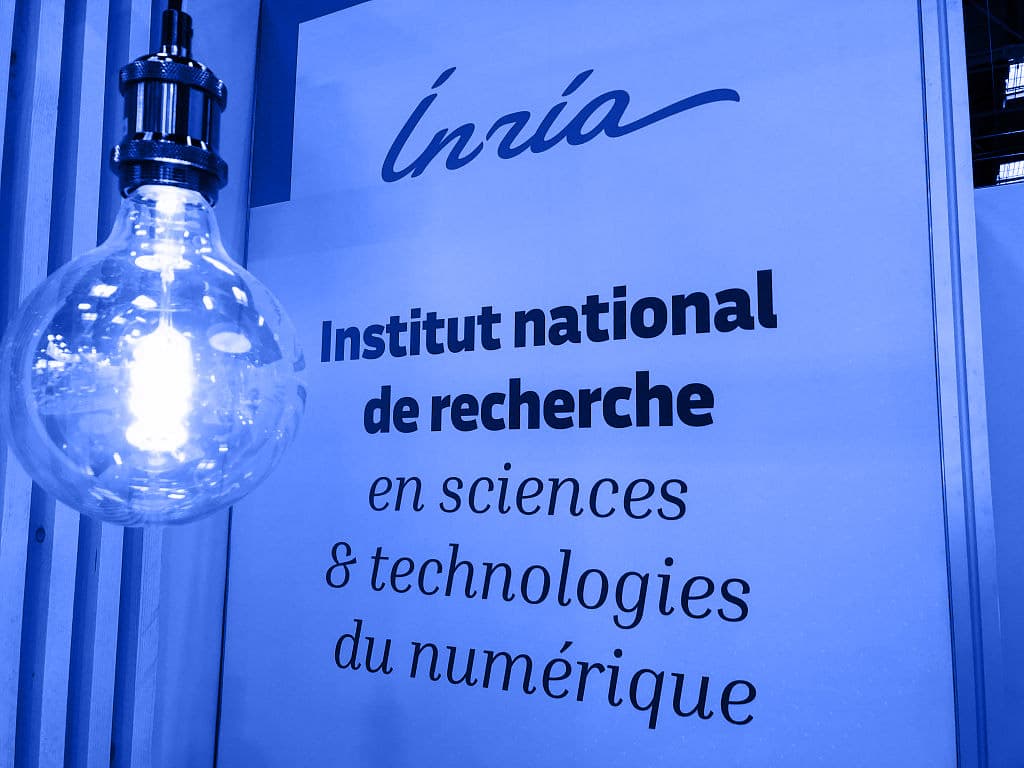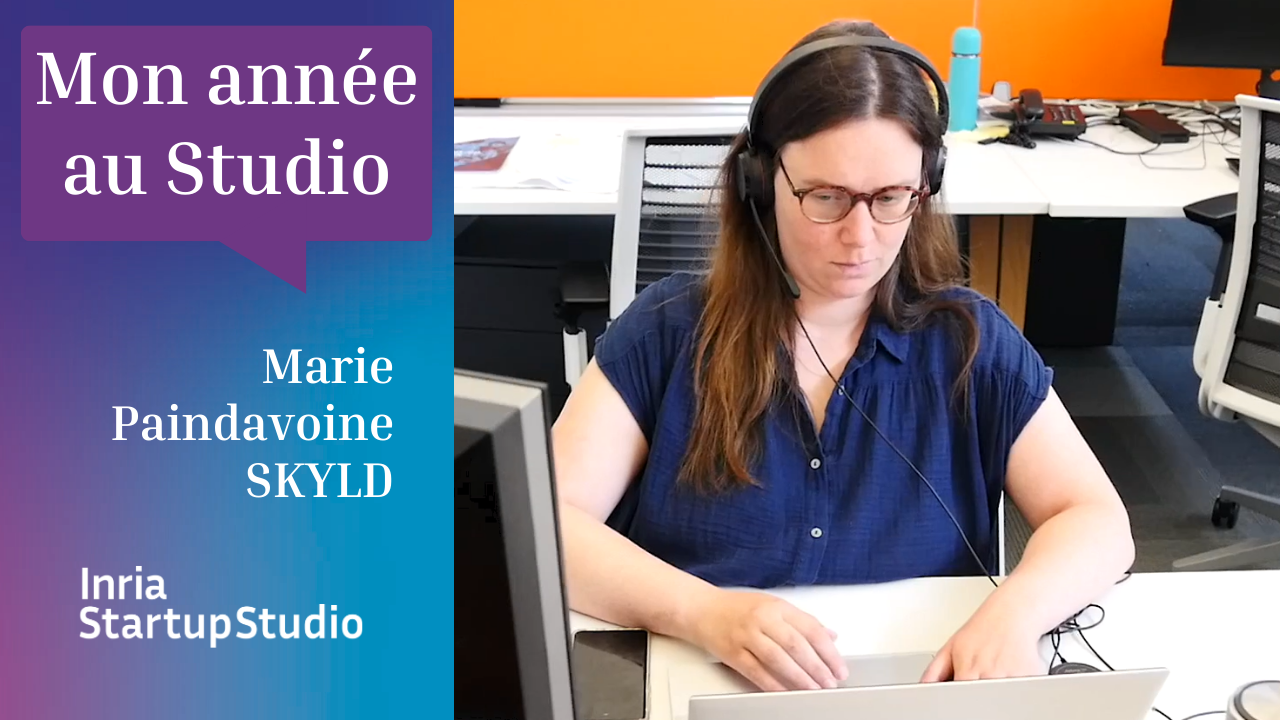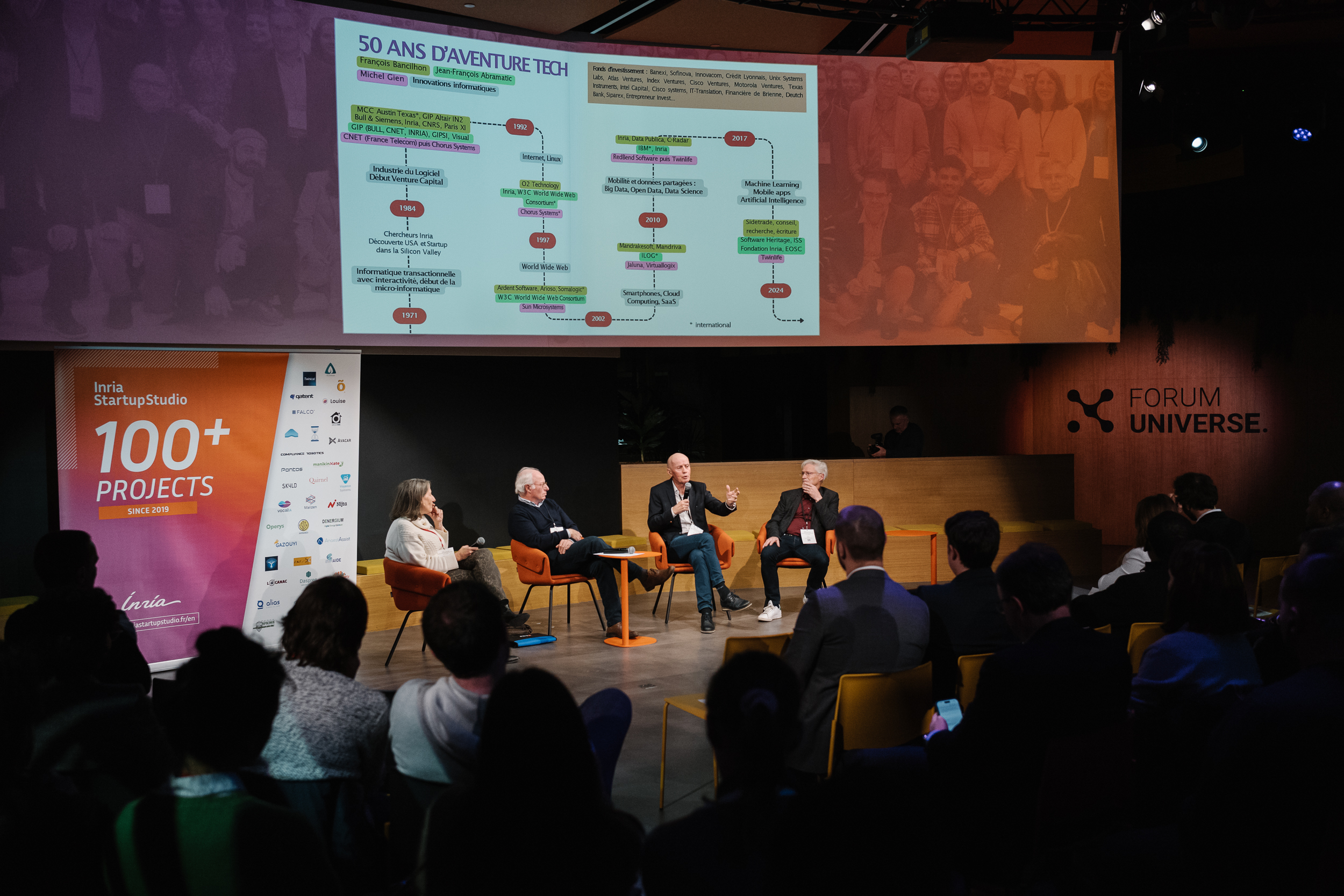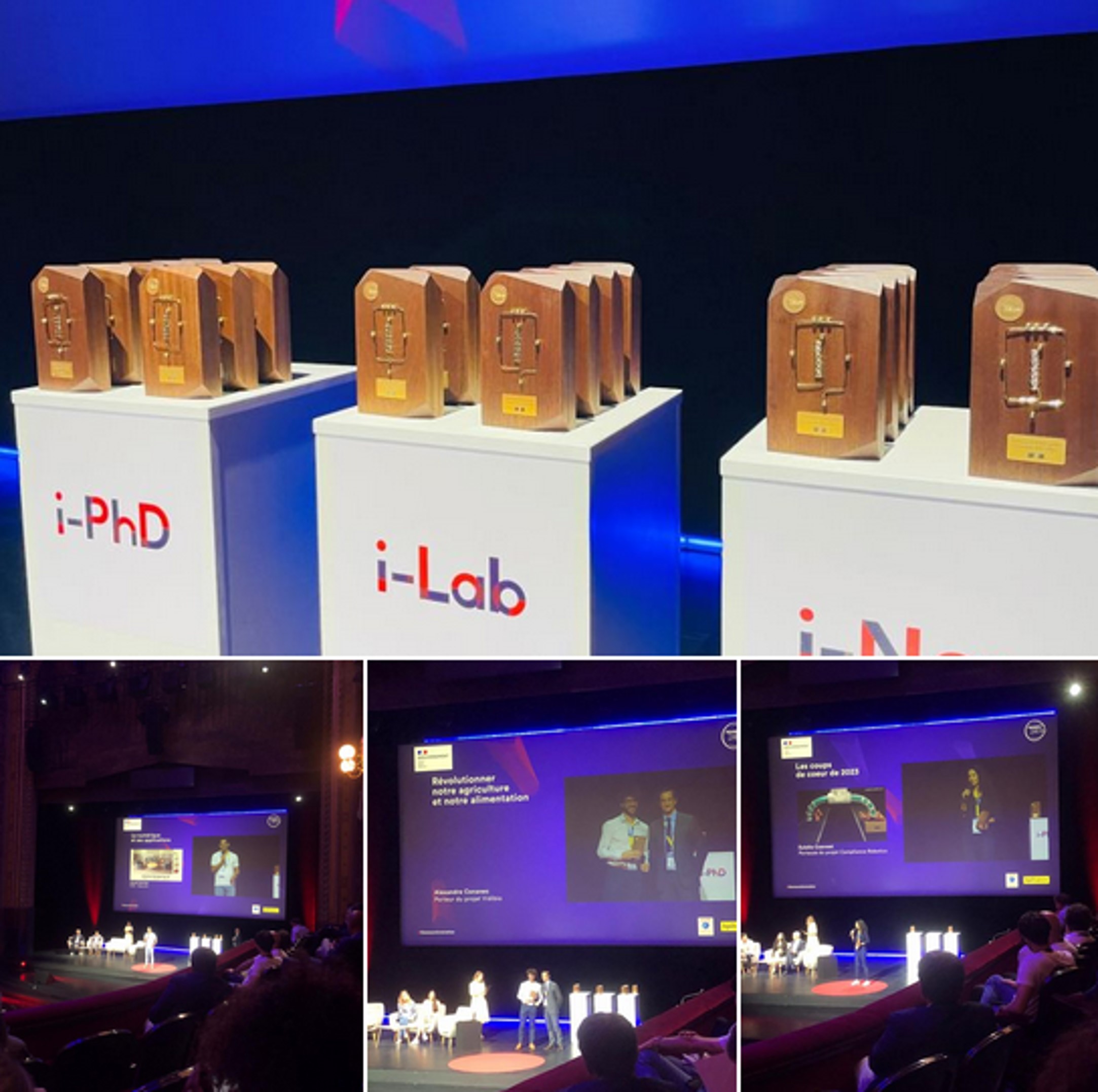
Accompagnement
27 minutes
Un glossaire du monde des Startups
Startup : une organisation temporaire à la recherche d’un modèle économique répétable et scalable.
Quand on vient du monde de la recherche ou du monde « normal », celui des startup peut parfois sembler mystérieux. On y emploie de nombreux acronymes et des termes anglo-saxons qui peuvent rendre difficile l’accès à ce monde, qui n’est pourtant pas si compliqué. Alors voici quelques éléments d’explication, le choix est sans doute imparfait mais, nous l’espérons, utile aux curieux.
| Français | English |
| Startup : une organisation temporaire à la recherche d’un modèle économique répétable et scalable. | Startup: a temporary organization in search of a repeatable and scalable business model. |
| Spinoff : une entreprise (une startup en particulier) issue d’une autre entité | Spinoff: a company (a startup in particular) created out of another entity. |
| Modèle économique ou modèle d’affaires : description de la manière dont une entreprise crée de la valeur. En pratique, cela revient à définir ce qu’elle vend, auprès de quels clients, de quelle manière et pour quel bénéfice. | Business model: description of how a company creates value. In practice, this amounts to defining what it sells, to which customers, in what way and for what benefit. |
| Plan d’affaires : rédaction structurée entre autres du modèle d’affaires et plus généralement de toutes les composantes d’une entreprise lui permettant de trouver stabilité et croissance. | Business plan: structured writing, among other things, of the business model and more generally of all the components of a company allowing it to find stability and growth. |
| Roadmap : description du plan multi-annuel, du chemin qui conduit à la prospérité, ou au moins qui permet de trouver les moyens de survivre | Roadmap: description of the multi-annual plan, the path that leads to prosperity, or at least to finding the means to survive |
| Burn rate : ce qu’une entreprise dépense chaque mois ou chaque année. | Burn rate: what a company spends each month or each year. |
| Pitch : présentation orale ou écrite sous forme de slides (le « pitch deck ») qui peut durer une minute (« elevator pitch »), 5 ou 10 minutes, rarement plus de 20 minutes. C’est un condensé du plan d’affaires. | Pitch: an oral or written presentation in the form of slides (the “pitch deck”) which can last one minute (“elevator pitch”), 5 or 10 minutes, rarely more than 20 minutes. It is a summary of the Business plan. |
| Lean startup, agile startup, pivot : manières souples, flexibles, frugales d’avancer et de changer de direction quand le chemin est bloqué (le « pivot »). | Lean startup, agile startup, pivot: flexible, fast and frugal ways of moving forward and changing direction when the path is blocked (the “pivot”). |
| Pricing : prix auquel un service ou produit est vendu (ou modélisation de ce prix). | Pricing: price at which a service or product is sold (or modeling of this price). |
| R&D : Recherche et développement. | R&D: Research and Development, |
| G&A : General and administration (dont comptabilité, finances, ressources humaines – RH), dirigée par le directeur administratif et financier (DAF). | G&A: General and Administration (including accounting, finance, human resources – HR). |
| S&M : Sales (ventes) et marketing. | S&M: Sales and marketing. |
| Marketing : analyse du marché d’une entreprise, ainsi que l’ensemble des actions prises par une entreprise relatives à ce marché. Ce n’est pas la publicité mais la publicité fait partie des actions de marketing ! | Marketing: the analysis of a company’s market, as well as all the actions taken by a company relating to this market. It is not advertising but advertising is part of the marketing actions! |
| Marché : ensemble des consommateurs ou clients qui achètent un produit ou un service, avec le prix payé, sa taille est le produit du nombre de client multiplié par le prix. | Market: group of consumers or customers who buy a product or service, with the price paid, its size is obtained by multiplying the number of customers by the price. |
| TAM (« Total Available Market ») ou Marché Total Disponible : certains parlent de la taille de l’univers. SAM (« Served Available Market) ou Segment du Marché Disponible : le marché qu’une entreprise peut adresser de manière réaliste. SOM (« Serviceable Obtainable Market ») ou Marché Cible, le marché que l’on peut réalistiquement capter. | TAM (“Total Available Market”), some talk about the size of the universe SAM (Served Available Market): market that a company can realistically address. SOM (“Serviceable Obtainable Market”): market that can realistically be captured. |
| Marketing stratégique : analyse d’ensemble du marché et positionnement (espéré) dans un marché. Marketing opérationnel : ensemble des techniques qui permettent d’exister dans un marché et d’être identifié par des prospects. | Strategic marketing: the overall analysis of a market and its (hoped-for) positioning in this market. Operational marketing: all the techniques that will allow to exist in a market and be identified by prospects. |
| Segmentation : opération consistant à découper le marché pour regrouper les clients en groupes homogènes et en secteurs particuliers. Le marché vertical désigne les clients d’un secteur particulier dans cette segmentation. | Segmentation: operation consisting of dividing the market to group customers into homogeneous sets and particular sectors. Vertical market refers to customers in a particular industry in this segmentation. |
| Marché de niche : un petit segment d’un marché où les produits sont adaptés à un groupe de clients bien défini. | Niche market: a small segment of a market where products are tailored to a well-defined group of customers. |
| Go to market : stratégie d’entrée dans un marché, dont la plage de débarquement (« beachhead ») est un marché de niche qui pourra ou non donné accès à un marché plus grand. | Go to market: market entry strategy, where the beachhead is a niche market which may or may not give access to a larger market. |
| Time to market : le temps pour développer et construire une offre commerciale ou un produit. En clair, le temps de mise sur le marché. | Time to market: the time to develop and build a commercial offer or product. In short, time to reach a market. |
| Minimum Viable Product (« MVP ») : version pour ne pas dire vision d’un produit qui permet d’obtenir un maximum de retours client avec un minimum d’effort. Il est plus question d’analyser la viabilité d’hypothèses que de vendre quoi que ce soit. | Minimum Viable Product (“MVP”), the version, not to say the vision, of a product that allows to obtain maximum customer feedback with minimum effort. It is more about analyzing the viability of hypotheses than selling anything. |
| Product Market Fit (PMF) : adéquation parfaite entre un produit/concept et son marché. Pour faire simple, c’est quand un concept plaît aux consommateurs, qu’il trouve sa place sur le marché. | Product Market Fit (PMF): perfect match between a product/concept and its market. To put it simply, it is when a concept appeals to consumers that it finds its place on the market. |
| Proposition de valeur : l’ensemble des avantages ou de la valeur économique qu’une entreprise promet d’offrir aux clients actuels et futurs qui achèteront leurs produits et/ou services. | Value Proposition: the full mix of benefits or economic value which a company promises to deliver to the current and future customers (i.e., a market segment) who will buy their products and/or services. |
| Customer lifetime value, ou « valeur vie client » (LTV) : le revenu moyen que génèrera un client, pendant tout le temps qu’il sera client. Le coût d’acquisition client (CAC) : coût moyen que doit payer une entreprise sur une période donnée pour conquérir un nouveau client. Le rapport LTV/CAC donne une indication de la valeur d’un client. | Customer lifetime value (LTV): the average revenue that a customer will generate, during the entire time they stay a customer. Customer acquisition cost (CAC): average cost that a company must pay over a given period to win over a new customer. The LTV/CAC ratio gives an indication of the value of a customer. |
| Preuve de concept (POC) : démonstration de la faisabilité d’un produit, d’une méthode ou d’une idée. Viennent ensuite le démonstrateur, le prototype, le produit et même le « whole product » c’est à dire les éléments ajoutés à un produit de base, le transformant en une offre souvent plus valorisée que les seuls attributs physiques (ex : garanties, évolutions, service après-vente, etc…) | Proof of Concept (POC): demonstration of the feasibility of a proposed product, method, or idea. Then comes the demonstrator, the prototype, the product and even the whole product i. e. additional elements added to a basic product, transforming it into an offering that is often more valuable than the physical attributes alone (eg guarantees, upgrades, etc…) |
| Early adopter : un individu ou une entreprise qui utilise un nouveau produit, une innovation ou une technologie avant les autres. Dans la terminologie de Geoffrey Moore, les nouveaux marchés ont une courbe d’adoption en forme de cloche (gaussienne), avec par ordre d’entrée les Innovateurs (les premiers à acheter le produit, sans consulter d’avis) puis les premiers adeptes, Early Adopters (achètent rapidement le produit et vont donner leur opinion), la majorité précoce (plus réfléchie, attend l’opinion des autres), la majorité tardive (va attendre qu’une majorité de personnes utilisent le produit) et les retardataires, Late Adopters (la dernière à acheter). Moore explique qu’il y a un gouffre difficile à franchir entre Early adopters et majorité précoce. | Early adopter: an individual or company that uses a new product, innovation or technology before others. In Geoffrey Moore’s terminology, new markets have a bell-shaped (Gaussian) adoption curve, with in order of entry the Innovators (the first to buy the product, without consulting reviews) then the first adopters, Early Adopters (quickly buy the product and will give their opinion), the early majority (more thoughtful. will wait for the opinions of others), the late majority (will wait until a majority of people use the product) and the Late Adopters (the last to buy). Moore explains that there is a difficult chasm to bridge between Early adopters and early majority. |
| Suspect : dans la vente, individu cible, c’est-à-dire personne pas encore “qualifiée”, dont on n’a pas encore suffisamment identifié les intérêts et les motivations. Lead : une personne qui a manifesté un certain intérêt. Prospect : encore un degré vers le client. En général, on qualifie et transforme un lead en prospect à partir du moment où il a manifesté son intention d’acheter. | Suspect: in sales, a target individual, that is to say a person not yet “qualified”, whose interests and motivations have not yet been sufficiently identified. Lead: a person who has shown some interest. Prospect: another step towards the customer. In general, a lead is qualified and transformed into a prospect from the moment she expresses her intention to buy. |
| Traction : capacité à attirer. C’est le moment où l’on dépasse le cercle des proches et des amis et que l’on commence à de plus en plus intéresser des tiers tels que des étrangers, la presse et les influenceurs. Ce n’est pas quelque chose d’hyper tangible comme le chiffre d’affaires par exemple. Il est très difficile de mesurer l’attrait d’une entreprise, donc la traction va représenter une sorte d’agrégation de signaux reçus. | Traction: ability to attract. This is the moment when a startup goes beyond the circle of relatives and friends and begins to increasingly interest third parties such as strangers, the press and influencers. It’s not something hyper tangible like the turnover for example. It is very difficult to measure the attractiveness of a company, so traction will represent a sort of aggregation of signals received. |
| Un « pain point » ou point de douleur désigne un problème irritant auquel est confronté un acteur. Plus le pain point est douloureux et répandu, plus le potentiel de marché et la capacité de traction sont prometteurs si la solution de la startup le résout ou l’atténue. | A “pain point” refers to an irritating problem experienced by an actor. The more intense and widespread the pain point, the more promising the market potential and traction capacity if the startup’s solution solves or alleviates it. |
| CEO ou Chief Executive Officer : PDG ou DG en France, CTO ou Chief Technical Officer : Directeur Technique, CSO ou Chief Scientific Officer : Directeur scientifique, COO ou Chief Operating Officer : Directeur des Opérations), CFO ou Chief Financial Officer (DAF ou Directeur Administratif et Financier), VP ou Vice-President : dirigeants dont les plus courantes sont Engineering (Ingénierie), Sales (Ventes), Marketing. | CEO or Chief Executive Officer (PDG or DG in France) CTO or Chief Technical Officer (Technical Director), CSO or Chief Scientific Officer (Scientific Director), COO or Chief Operating Officer (Director of Operations), CFO or Chief Financial Officer (DAF or Director of Administration and Finance). VP or Vice-President: additional executives with responsibilities such as Engineering, Sales, Marketing. |
| Conseil d’Administration ou Board of Directors, présidé par le Chairman (le PDG cumule les fonctions de DG et de Président du Board) : instance supérieure d’une entreprise en charge de la gouvernance de celle-ci. | Board of Directors, headed by the Chairman (the CEO often combines the functions of CEO and Chairman of the Board: governing body of a company. |
| Actions : parts d’une entreprise (en anglais indifféremment Share, Stock ou Equity). Il y a différent type d’actions, préférentielles (preferred) ou ordinaires (common). Ces actions ont un prix (dont la valeur peut flucter). Le produit du prix par le nombre d’actions constitue la valeur de la société. | Share, Stock or Equity: individual parts of a company. There are different types of shares, preferred (with privileges) or ordinary (common). These shares have a price (the value of which may fluctuate). The product of the price multiplied by the number of shares is the value of the company. |
| Prix nominal : prix initial d’une action. Il peut ensuite évoluer, mais il n’est pas lié au prix payé pour acheter ou vendre des actions. | Nominal price or par value: initial price of a share. It can evolve over time but it is not linked to the price paid to buy or sell shares. |
| Capital social d’une société : produit du prix nominal par le nombre d’actions. | Capital of a company: product of the nominal price by the number of shares. |
| Levées de fonds : apport financier en contrepartie de nouvelles actions. Elles se font auprès de connaissances (Friends & Family), d’investisseurs individuels (Business Angels) ou institutionnels, comme le capital risque (Venture Capital ou VC). La succession de telles levées de fonds est appelées tours d’investissements (financing rounds) avec des séries A, B, C… Les premiers tours sont appelés Seed (Amorçage) et même pre-seed (pré-amorçage). | Fundraising: injection of money in exchange for new shares. They are done with acquaintances (Friends & Family), individual investors (Business Angels) or institutional investors, such as Venture Capital or VC. The succession of such fundraising is called investment rounds (financing rounds) with series A, B, C… The first rounds are called Seed and even pre-seed. |
| Love money : l’argent investi par les amis (friends and family) en général à la création ou en preseed/seed. BA ou Business Angel : des individus assez fortunés pour investir dans les premiers tours d’une startup VC ou venture capital : le capital-risque est un investisseur institutionnel spécialisé dans l’investissement risqué dans les startup. | Love money: money invested by acquaintances (friends and family) generally at the creation or preseed/seed. BA or Business Angel: individuals wealthy enough to invest in the first rounds of a startup VC or Venture Capital: an institutional investor specializing in risky investments in startups. |
| Due Diligence : l’ensemble des vérifications qu’opère un investisseur dans le but de décider d’un investissement. En général, elle a lieu avant la rédaction d’un term sheet, même si certains éléments peuvent lui être postérieurs. | Due Diligence: a comprehensive appraisal of a business undertaken by a prospective investor or buyer, especially to establish its assets and liabilities and evaluate its commercial potential. Most of it is done prior to a term sheet, some of it can come after it. |
| Term sheet : document proposé aux entrepreneurs en amont d’un financement et servant à documenter les points essentiels du futur tour. | Term sheet: document proposed to entrepreneurs prior to a financing and used to document the essential points of the future round. |
| Closing ou clôture : dans une transaction commerciale (y compris un investissement), le fait de signer le contrat final avec une date de signature. | Closing: in a commercial transaction (including an investment), the fact of signing the final contract with a date of signature. |
| Actions préférentielles : les investisseurs reçoivent en général des actions auxquelles sont attachées de nombreux avantages. Par exemple : Liquidation préférentielle : en vas de vente de la startup, les investisseurs recevront plus que le pro-rata qu’ils possèdent de l’entreprise. Anti-dilution : en cas de futur tour de financement, à prix inférieur au prix qu’ils ont payé, les investisseurs recevront de nouvelles actions. Tag Along ou clause de sortie conjointe : un actionnaire minoritaire peut vendre ses actions lors d’une vente d’un autre actionnaire. Drag along ou clause de sortie forcée : un actionnaire peu exiger la vente des actions d’autres actionnaires avec les siennes. | Preferred shares: investors generally receive shares with numerous advantages. For example: Liquidation preference: in the case of a trade sale (M&A), investors will receive more than the pro-rata they own in the company. Antidilution: in the event of a future financing round, at a price lower than the price they paid, investors will receive new shares. Tag Along or joint exit clause: a minority shareholder can sell their shares during a sale by another shareholder. Drag along or forced exit clause: a shareholder can force the sale of the shares of other shareholders with his own. |
| Good leaver, bad leaver : clauses d’un term sheet et des futurs documents décrivant la manière dont les parts des fondateurs et des salariés sont traitées, s’ils quittent la startup en bon ou mauvais termes. | Good leaver, bad leaver: clauses in a term sheet and future documents describing how founders and employee shares are dealt with, depending if they leave the company in good or bad terms. |
| Partenaires : les dirigeants d’un fonds de capital-risque. Le VC a ses codes particuliers. General Partner : les dirigeants du fonds. Limited Partner : les investisseurs dans un fonds Partner : le VC est assez peu hiérarchique, mais un partner a un pouvoir de décision sur les dossiers de startup dans lesquels il a investi, mais n’est pas un dirigeant du fonds. Principal, Associate, Analyst ; les titres dans l’ordre décroissant de hiérarchie, sans pouvoir de décision d’investissement. | Partners: the managers of a venture capital fund. VC has its specific glossary. General Partner: the managers of the fund. Limited Partner: the investors in a fund Partner: the VC is not very hierarchical, but a partner has decision-making power regarding questions related to invested startups, but is not a manager of the fund. Principal, Associate, Analyst; titles in descending order of hierarchy, without investment decision-making power. |
| Initial Public Offering ou IPO : introduction en bourse permettant une nouvelle levée de fonds et une liquidité des actions de l’entreprise qui peuvent être vendues au grand public. | Initial public offering (IPO): the listing of a company on a stock market. As long as it is not listed, a company is said to be private (we talk of Private Company and Private Equity). An IPO can also be a fund raising mechanism as the shares can be freely sold. |
| Merger and Acquisitions ou M&A : vente d’une entreprise à une autre (phénomène plus courant que l’IPO). | Merger and Acquisitions or M&A : trade sale of a company to another one (a transaction that is more common than an IPO). |
| Private equity (PE) : activité d’investissement qui ne propose pas d’actions au grand public. Le capital-risque est un sous-ensemble du PE. D’autres formes incluent le LBO ou Leveraged Buyout (utilisant un levier financier tel que la dette) et le MBO ou Management Buyout (où les dirigeants acquièrent la majeure partie de leur entreprise). LBO et MBO peuvent avoir lieu conjointement. | Private equity (PE): an investment activity that does not offer stock to the general public. Venture capital is a subset of PE. Other forms include LBO or Leveraged Buyout (using financial leverage such as debt) and MBO or Management Buyout (where managers acquire most of their firm). MBO and LBO may take place conjointly. |
| Leveur de fonds : des professionnels (parfois au sein d’une banque d’affaires) dont le métier est de trouver des finances pour la société qui fait appel à eux. | Fundraiser: professionals (sometimes within an investment bank) whose job is to find finances for the company that calls on them. |
| Roadshow : une série de rencontres avec des investisseurs potentiels au cours desquelles les entrepreneurs et le leveur de fonds les accompagnant dans l’opération financière pitchent leur projet. Des roadshows ont également lieu avant une introduction en bourse. | Roadshow: a series of meetings with potential investors during which the entrepreneurs and the fundraiser accompanying them in the financial operation pitch their project. Roadshow also take place before an IPO. |
| Valorisation : la valeur d’une entreprise est le produit de son prix par action par le nombre d’actions. | Valuation: the value of a company is the product of its price per share by the number of shares. |
| Valorisation post-money : la nouvelle valeur d’une entreprise après la levée de fonds, soit la somme de la valorisation pré-money et du montant de la levée de fonds. | Post-money valuation: the new value of a company after the fundraising, i.e. the sum of the pre-money valuation and fundraising amount. |
| Taux de retour sur investissement ou TRI : augmentation annuelle du prix de l’action en pourcentage. Celui-ci est calculé comme le rendement d’un compte en banque. | Return on Investment or ROI: the annual percentage increase of the share price, calculated similarly to the return of a bank account. |
| Stock-option : le droit d’acquérir des actions dans le futur à un prix déterminé à l’avance et idéalement avantageux. ESOP: Employee Stock Option Plan. Les employés sont rémunérés en stock-options par l’intermédiaire de l’ESOP est l’Employee Stock Option Plan), BSPCE ou Bons de Souscriptions de Part de Créateurs d’Entreprises : le terme français pour les stock-options des employés. BSA ou Bons de Souscriptions d’Actions (Warrant est l’équivalent anglo-saxon) : une stock option plutôt réservée aux entités externes à l’entreprise (investisseurs, consultants, fournisseurs de technologies ou de services). BSA AIR (pour « accord d’investissement rapide ») : un BSA dont le prix d’exercice n’est pas fixé et sera déterminé lors d’un futur tour d’investissement selon une formule prédéfinie. Les stock-options ont leur jargon : elles sont en généralement accordées (« grant ») par périodes mensuelles ou trimestrielles sur une durée de 4 ou 5 ans (le « vesting ») et l’option est exercée en payant une somme modique (« exercice price ») attribuant les actions aux détenteurs. Il y a une période sans vesting, en général la première année dite « cliff ». | Stock-Option: the right to acquire shares in the future at a determined (and ideally favorable) price. ESOP: Employee Stock Option Plan. Employees are compensated in stock-options through the ESOP. BSPCE: the French term for stock-options for employees in France, “Bons de Souscriptions de Part de Créateurs d’Entreprises”. BSA: the French term for warrants, options usually reserved for entities external to the company (investors, consultants, technology or service providers), “Bons de Souscriptions d’Actions”) SAFE or Simple Agreement for Future Equity: slightly equivalent to the French BSA Air, an investment where the price per share will be decided in the future according to a predefined formula. Stock options have their jargon: they are generally granted at monthly or quarterly dates over a period of 4 or 5 years (the “vesting”) and the option is exercised by paying a small sum (“exercise price”) allocating the shares to the holders. There is a period without vesting, generally the first year called “cliff”. |
| Table de capitalisation : la liste de tous les actionnaires, avec leur nombre et type d’actions, le prix payé par action, la date d’achat (y compris les stock-options, on parle alors de « fully diluted »). Les actionnaires incluent les (co)fondateurs, les investisseurs, les employés, des consultants ou conseillers externes dont les membres du conseil d’administration. | Cap. Table (for “capitalization”): the list of all shareholders with their number and type of shares, the price per share they paid, the date of investment (the stock-options are generally included with the term “fully diluted”). The shareholders include the (co)founders, the investors, the employees as well as advisors and consultants including the board members. |
| Bootstrapping : situation dans laquelle un entrepreneur démarre une entreprise avec peu de capital, en s’appuyant sur de l’argent autre que des investissements extérieurs. On dit qu’un individu bootstrappe lorsqu’il tente de fonder et de bâtir une entreprise à partir de ses finances personnelles ou des revenus d’exploitation de la nouvelle entreprise. (Le terme « bootstrapping » trouve son origine dans une expression utilisée aux XVIIIe et XIXe siècles : « décoller par soi même ». À l’époque, cela faisait référence à une tâche impossible. Aujourd’hui, cela fait davantage référence au défi de créer quelque chose à partir de rien (https://en.wikipedia.org/wiki/Bootstrapping). Dilution / relution : toute augmentation de capital conduit à une diminution de la part des actionnaires existants, on parle de dilution. Il arrive que l’on alloue de nouvelles actions à des actionnaires dilués, pour des questions de motivation, on parle alors de relution. Financement non dilutif : De nombreux entrepreneurs rêvent de ne pas faire appel à des investisseurs, notamment en développant leur entreprise avec les revenus et profits générés par les ventes. Si celles-ci sont convaincantes, les banques accepteront de prêter de l’argent. Les objets financiers ne modifiant pas le capital d’une entreprise sont dits non-dilutifs (prêts, dette, obligations non convertibles et aussi subventions). | Bootstrapping: a situation in which an entrepreneur starts a company with little capital, relying on money other than outside investments. An individual is said to be bootstrapping when they attempt to found and build a company from personal finances or the operating revenues of the new company. (The term “bootstrapping” originated with a phrase in use in the 18th and 19th century: “to pull oneself up by one’s bootstraps.” Back then, it referred to an impossible task. Today it refers more to the challenge of making something out of nothing https://en.wikipedia.org/wiki/Bootstrapping). Dilution / relution: any capital increase in capital to a reduction in the share ownership of existing shareholders, this is called dilution. It happens that new shares are sometimes allocated to diluted shareholders, for reasons of motivation, this is called relution (in French, and is similar to antidilution). Non-dilutive funding: Many entrepreneurs dream of not going to investors, in particular by developing their business with the income and profits generated by sales. If these are convincing, the banks will agree to lend money. Financial objects that do not modify the capital of a company are said to be non-dilutive (loans, debt, non-convertible bonds and also subsidies). |
| Ecosystème : comme pour un système naturel, l’ensemble des acteurs qui contribuent au fonctionnement d’un ensemble économique.Pour le monde des startups, il existe des acteurs spécifiques : Incubateur : une structure d’appui à la création d’entreprise qui permet de passer de l’idée initiale à la réalisation et à la consolidation d’un projet structuré. Les incubateurs sont apparus puis se sont développés dans les années 80-90. Accélérateur : une forme d’incubation très sélective, sur mesure, pour une sélection de projets à fort potentiel de croissance. Ils se terminent en généralpar un événement de pitch public ou une journée de démonstration (« demo day »). Certains ont une capacité d’investissement dans les startup sélectionnées. Startup Studio : structure de création de startups s’appuyant sur des ressources partagées et une équipe multidisciplinaire. Les startups studios sont aussi appelés startup factory (usine de startups), company builder ou venture builder. OTT ou organismes de transfert de technologie : entités universitaires ou commerciales dont la mission est de faciliter la gestion des droits de propriété intellectuelle et le transfert de technologie en comblant le fossé entre la recherche et la pratique. SATT ou Société d’Accélération du Transfert de Technologies : OTT français au nombre de 13 et créés en 2010 sous forme de sociétés anonymes à vocation commerciale dont les universités partenaires sont les actionnaires principaux avec BPIFrance : banque publique d’investissement française, ayant pour mission le financement et le développement des entreprises. Elle est née à la fin de l’année 2012 du regroupement d’Oséo, de CDC Entreprises, du Fonds stratégique d’investissement. C’est un acteur majeur de l’écosystème français, opérateur et financier de nombreux mécanismes d’aide, comme par exemple les outils de prématuration et de maturation tels que iPhD, BFT, BFTE, BFTLab, ILab. | Ecosystem: as for a natural system, all the actors who contribute to the functioning of an economic whole. For the world of startups, there are specific players: Incubator: an organization that helps startup companies and individual entrepreneurs to develop their businesses by providing a full-scale range of services. Incubators appeared in the 80s and developed in the 90s. Accelerator: fixed-term, cohort-based, very selective programs for high potential projects, that include mentorship and educational components and culminate in a public pitch event or demo day. Some of them also have an investment capacity in the selected startups. Startup Studio: a structure that aims at industrialize the creation of startups, based on shared resources and a multidisciplinary team. Startup studios are also called startup factories, company builders or venture builders. TTO or Technology Transfer Office: academic or commercial entities whose mission is to facilitate the management of intellectual property rights and technology transfer by bridging the gap between research and practice. SATT or Société d’Accélération du Transfert de Technologies: French OTTs created in 2010 with a commercial vocation of which the partner universities are the main shareholders together with BPIFrance. BPIFrance: the French public investment bank, which mission is the financing and development of businesses. It was born at the end of 2012 from the merger of Oséo, CDC Entreprises and the Strategic Investment Fund. It is a major player in the French ecosystem, operator and financier of numerous aid mechanisms such as iPhD, BFT, BFTE, BFTLab, ILab. |
Date de publication : 15/11/2023
Envie de vous lancer ?






